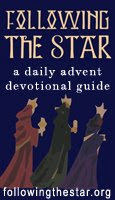We live in a culture addicted to light; it is difficult for us to appreciate the Advent gifts of darkness. November’s National Geographic magazine cover story looked into the ways that our world suffers from light pollution: the migration patterns and breeding cycles of animals have been thrown off or sped up by all our artificial light, and we humans suffer from lack of rest and balance. With streetlights and headlights, we have been slowly extending the day, and shortening the night – so we can work more and consume more and travel further and feel more safe. We would rather be in the Power and Light district than the alleys of powerlessness and shadows, right?

A few weeks ago, I went to the new exhibit at Union Station – Dialog in the Dark. For a whole hour, I walked around in pitch black darkness. I had a white cane and a sight-impaired guide. It was disorienting and confusing. I realized how darkness is a kind of surrendering of control. How darkness demands trust and patience. (Think about when someone asks you to close your eyes, or to blindfold you – the first question that springs up in your mind is, Do I trust this person?) I had to rely on senses other than sight to get through very normal, everyday situations. We went to the market, we crossed the street, we sat in the park . . . The moments that felt most enlivening to me were the times when I was waiting or sitting – listening. Hoping that my guide would call me or come take my hand and lead me somewhere new.
I realized that in order for us to more deeply live and proclaim the way of peace, we must learn the discipline of sitting in darkness. We must withdraw from the sparkle and the noise of this season, name the darkness of this world, befriend our own inner darkness, and hold vigil with those who sit in the darkness and the shadow of death.
We must discover that darkness is a place of creative possibility, a place from which new things can begin: from photography darkrooms to the womb to cocoons to Jesus’ tomb, darkness can be a place of new life, of new beginnings. The Spirit of God hovers over the dark waters at creation, and from the waters of chaos begins to create light and life. Christian mystics and Orthodox Christians have long regarded the darkness of God to be a powerful and transforming mystery. They speak of the “dark night of the soul” and the “dark cloud of unknowing” as spiritual experiences, profound encounters with God.
Sitting in the dark is a very active discipline – a discipline that demands focus so that we are not sleeping in the dark, nor stumbling along trying to make it on our own. This waiting in the dark, sitting in the dark, is an Advent prayer.
Move over the face of my deep, my darkness,
my endless restless chaos,
and create, O God;
trouble me, comfort me, stir me up, and calm me,
but do not cease to breathe
your Spirit into my wakening soul.
- Jan Richardson, in her Advent book Night Visions





No comments:
Post a Comment